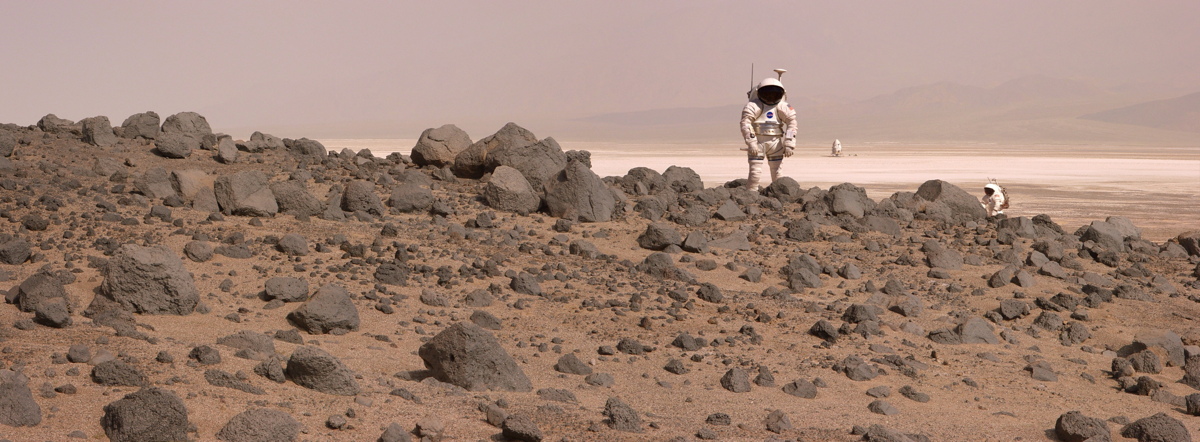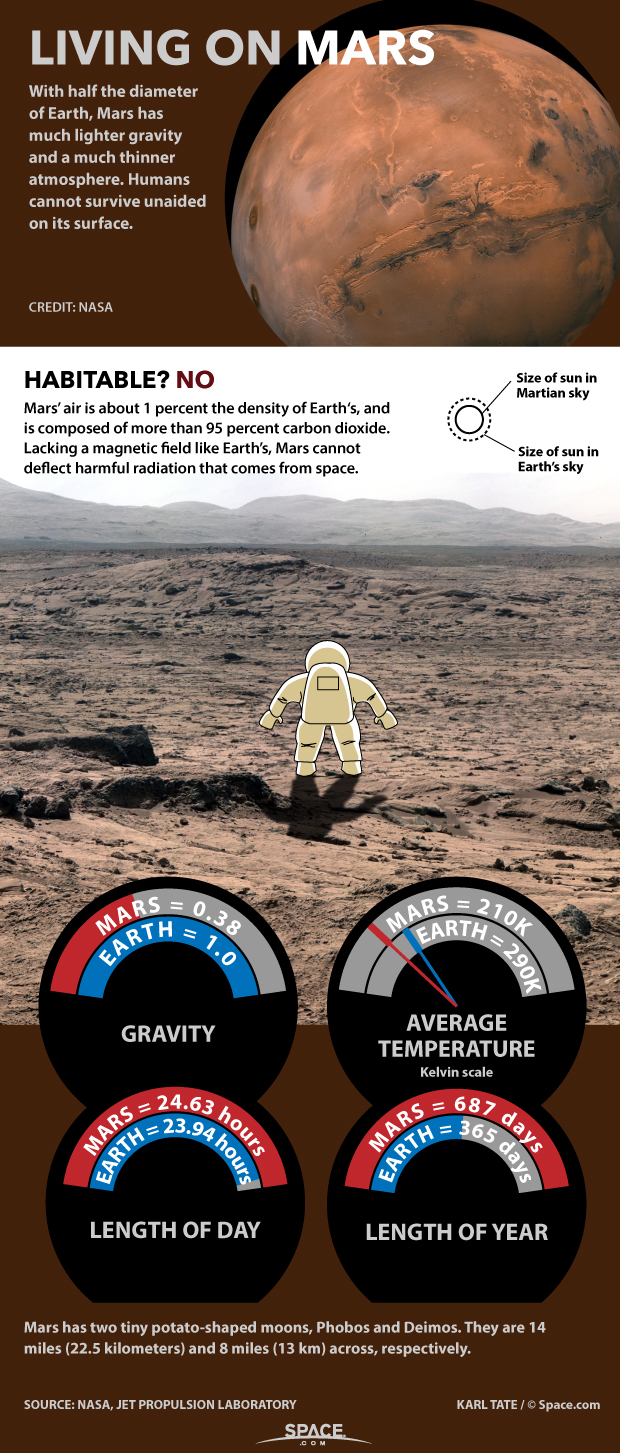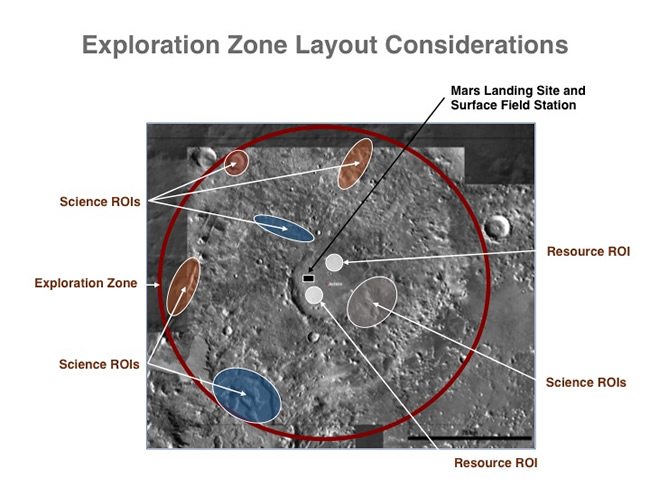Permanent Mars Colony Is 'Long Way Down the Road,' NASA Says

The first NASA astronauts to set foot on Mars will aim to establish a research-and-operations base, not a permanently inhabited colony, agency officials say.
According to NASA's current plans, the Mars outpost — which NASA hopes to set up by the end of the 2030s — will serve as a hub that accommodates astronauts on a temporary basis, said Ben Bussey, the chief exploration scientist in NASA's Human Exploration and Operations Mission Directorate.
A colony is "a long way down the road. No one's thinking of, on the NASA side, like a permanent human base," Bussey said Wednesday (March 16) during a presentation with the space agency's Future In-Space Operations (FISO) working group. [Red Planet or Bust: 5 Crewed Mars Mission Ideas]
"The idea here is that you would have your exploration zone that you set up for the first crew," Bussey added. "And that crew would leave, and then you send another crew at the next good launch opportunity. So it isn't permanently occupied, but it is visited multiple times."
Mars exploration zones
The exploration zone (EZ) to which Bussey referred will be a circle with a radius of roughly 62 miles (100 kilometers) — about the amount of ground NASA envisions its astronauts will be able to cover comfortably in 2030s Mars rovers.
Crew quarters and other buildings — the EZ's "habitation zone" — will sit at the center of this circle, which will also contain science and resource "regions of interest" (ROIs). Astronauts will visit science ROIs to hunt for signs of Mars life and perform other investigations; resource ROIs will provide the pioneers with water ice and other raw materials needed for day-to-day living.
"You want to be as close to self-sufficient as you can, and that's a mixture of having systems that recycle your products, as well as making use of local resources," Bussey said.
Breaking space news, the latest updates on rocket launches, skywatching events and more!
The EZ setup will function much like McMurdo Station, the United States' research facility in Antarctica, he added. McMurdo Station serves as a base from which scientists perform a variety of research and exploration work around the southernmost continent during the summer field season. (There is one key difference, though: McMurdo is permanently staffed, as some support personnel stay through the harsh Antarctic winter.)
"By going to the same place initially multiple times, you build up infrastructure, you build up spares and you build up capability," Bussey said.
This approach will boost astronaut safety and also help facilitate broader Red Planet exploration in the long run, he added. [Giant Leaps: Top Milestones of Human Spaceflight]
"You may initially only explore roughly 100 kilometers away from your base, but gradually, you'll be able to go further," Bussey said.
NASA has not yet determined how long astronauts will stay at the EZ initially, he added, nor where exactly the EZ will be. The agency is currently evaluating 45 potential sites that scientists submitted in response to a recent call for proposals.
These targets, which are scattered all over Mars, were discussed last October during a four-day EZ workshop in Houston. NASA aims to hold the second such workshop in April 2017, agency officials have said.
But the final EZ site selection is likely years down the road. Before making a decision, NASA wants to map out Mars' near-surface deposits of water ice precisely, and such work will probably require the launch of a new resource-scouting orbiter, said Rick Davis, assistant director for science and exploration in the Science Mission Directorate at NASA headquarters.
The space agency aims to have such an orbiter at Mars by 2022 or so, Davis said.
"It's time to get going on it," Davis said of the orbiter mission during the March 16 FISO talk, which he presented jointly with Bussey.
Colonization plans
One of these groups is SpaceX, the American spaceflight company founded in 2002 by billionaire entrepreneur Elon Musk. Musk has stressed many times over the years that he established SpaceX primarily to help make humanity a multiplanet species.
Musk envisions thousands of people living on the Red Planet in the not-too-distant future. The key to making this happen, he has said, is to develop fully and rapidly reusable rockets, which could slash the cost of spaceflight by a factor of 100 or more.
So SpaceX has been conducting a series of increasingly ambitious reusable-rocket tests over the past few years. For example, the company has repeatedly attempted to land the first stage of its Falcon 9 rocket back on Earth during launches.
Most of these tries have been near misses. On multiple occasions, the rocket stage successfully hit the deck of its target "autonomous spaceport drone ship" in the ocean but ended up toppling over and exploding. But a Falcon 9 stage did land softly on terra firma at Florida's Cape Canaveral Air Force Station this past December — the first time this had ever been done during an orbital launch. (Blue Origin, the spaceflight company established by Amazon.com founder Jeff Bezos, has also pulled off rocket landings, but so far, only during suborbital launches.)
The Netherlands-based nonprofit Mars One is also shooting for a Red Planet colony. The group aims to land four pioneers on Mars in 2027 and then send more settlers every two years thereafter. (There are no plans at the moment to bring anyone back to Earth.) Mars One aims to pay for these activities by staging a global media event around the colonization process.
Follow Mike Wall on Twitter @michaeldwall and Google+. Follow us @Spacedotcom, Facebook or Google+. Originally published on Space.com.

Michael Wall is a Senior Space Writer with Space.com and joined the team in 2010. He primarily covers exoplanets, spaceflight and military space, but has been known to dabble in the space art beat. His book about the search for alien life, "Out There," was published on Nov. 13, 2018. Before becoming a science writer, Michael worked as a herpetologist and wildlife biologist. He has a Ph.D. in evolutionary biology from the University of Sydney, Australia, a bachelor's degree from the University of Arizona, and a graduate certificate in science writing from the University of California, Santa Cruz. To find out what his latest project is, you can follow Michael on Twitter.


